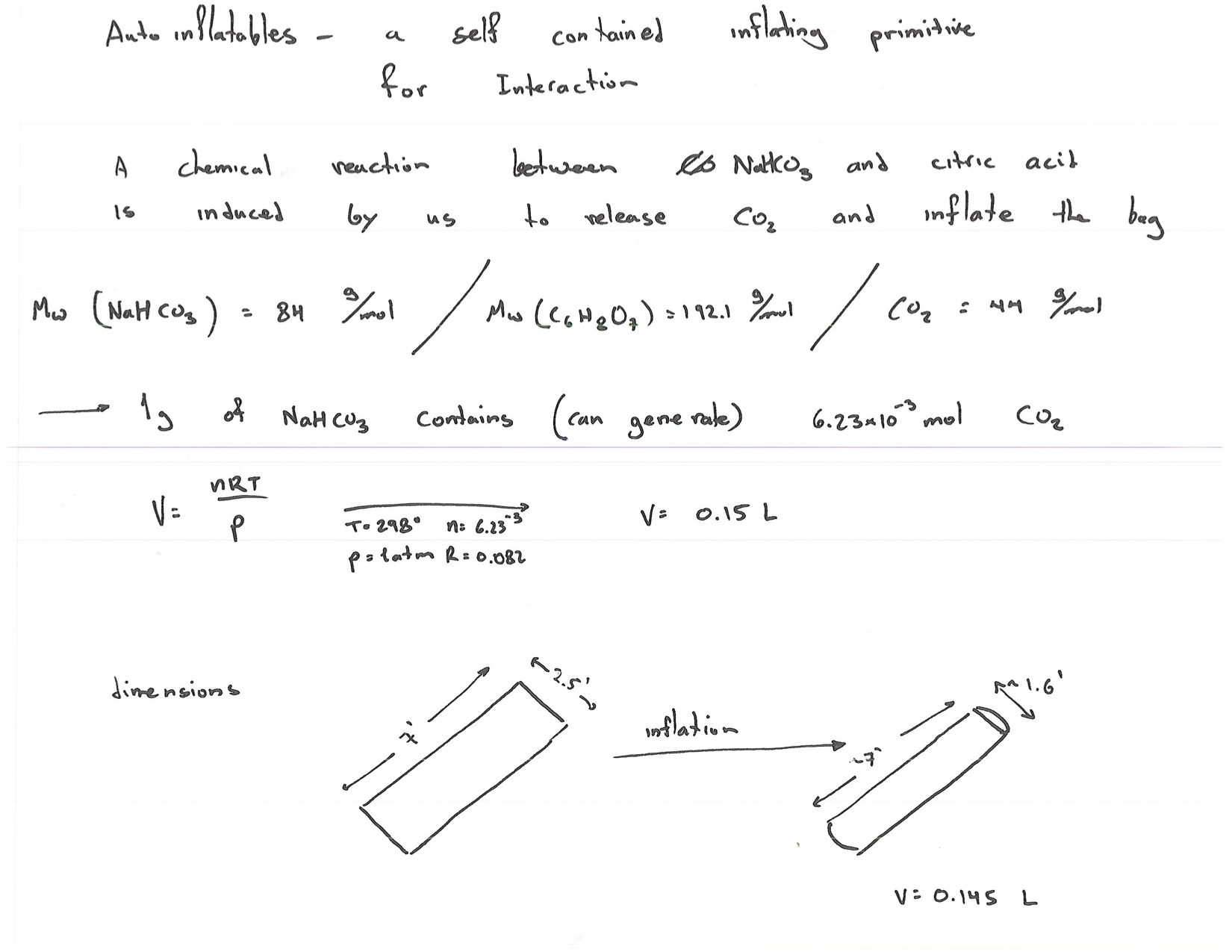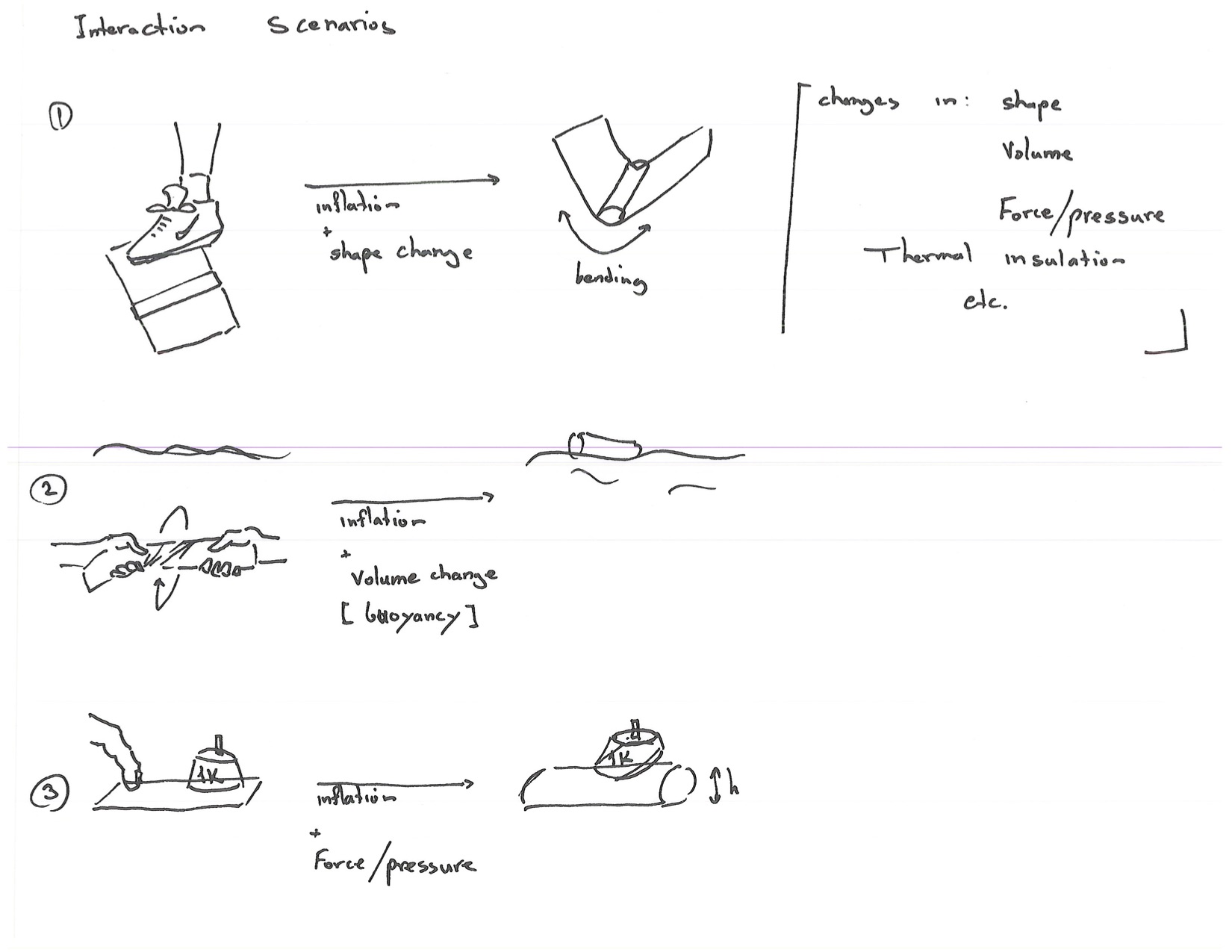Auto inflatables is a self contained inflatable primitive that uses sodium bicarbonate and citric acid to create carbon dioxide. The gas inflates the previously flat bag to a cylinder- like shape.
this can be used in HCI for: shape changes, application of pressure/force, thermal insulation, volume and buoyancy change and many more.
different chemistries can be used to control the identity of the gas produced and it’s properties (flammable, inert etc.)
The main benefit of the system is that it is self contained and therefore doesn’t need an external source of air like a pump.
Potential interaction scenarios with the system are: a disposable bicycle helmet, immediate cast for first aid kits, inflatable cooler for drinks, scuba diving gear and many more.
The main advantage of this chemistry seems to be that is is a compact (portable) power-source for inflatables. What scenarios can it do that would be impossible to do, even as a prototype, if they weren’t so compact/portable/self-powered? The other advantage is that is it easily initiated by the user directly – no buttons etc. Does this have to be a binary on/off reaction, or can it be controlled continuously? However, I’m sure there are limitations for max speed, reversibility, max inflation, etc. What real-world scenarios make the most sense given the advantages and constraints? Esp. what interactions make this more compelling than just an inflatable counterpart to the glowstick or hand-warmer?
-Dan
Udayan’s comments:
Autoinflation is an interesting phenomenon. However, from an interaction standpoint what does this bring to the table? Can you identify scenarios where autoinfltation matters?
Almost “realtime” inflation and buoyancy are interesting props, I think you should explore this. In case of life-vest, it makes sense to have a water triggered inflation to give buoyancy.
Another way to think about this is to see how to bring programmability to buoyancy across time.


